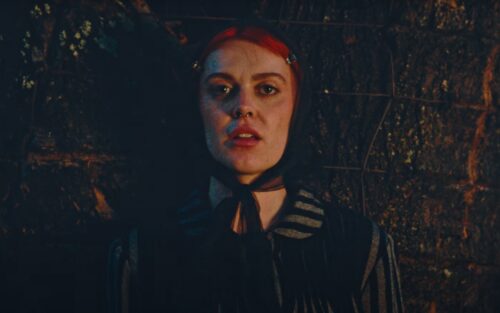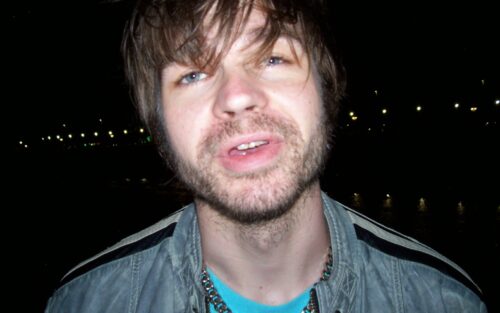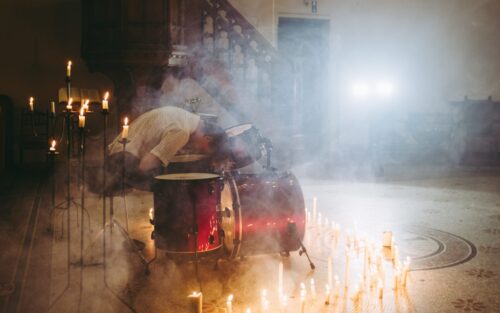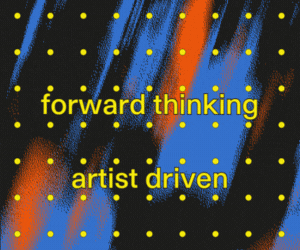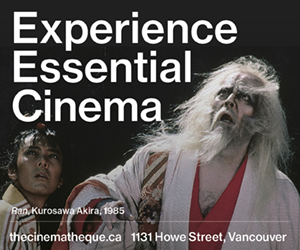Rap Pioneer Kardinal Offishall Is The Bridge To A Bygone Era
The visionary emcee who put Toronto on the map is lifting up new voices while launching a fresh new lifestyle collection.
By Daniel McIntosh
- Published on
When we connect over Zoom early on a Friday morning, he’s already hours deep into the day’s media carousel. Perhaps today will find him touting his new clothing collaboration. Or liaising with one of the artists he represents who depend on his experience. Or collecting yet another accolade for the 20-year anniversary of his celebrated major label debut, Quest for Fire: the Firestarter, Vol. 1.
Harlow’s role as in A&R for Universal Music Canada lets him see the boardroom from both sides. His time sparring with major labels as an independent artist gives him a certain proximity to his artists that others lack. He knows what it’s like to be an artist staying up with anxiety the night before a single release, and the sleepless nights that come with the hectic scheduling. When he informs on how to handle the media, it’s because he still does seven interviews a day (like this one). “Knowing what that feels like, I can communicate to them in a way that is very respectful of their talent, respectful of what they’re going through—and I hope—is thoughtful. Because they know it’s not just some fly shit that sounds good.”
Kardinal Offishall is perhaps best known internationally for his series of collaborations with Pharrell, Clipse and Sean Paul. The trademark energy that made his track “Dangerous ft. Akon” go triple-platinum is the same energy that helps guide his cadre of new artists. Last year alone, he guided three musicians to their debuts, among them Scarborough R&B singer Savannah Ré’s Opia EP. Offishall says Ré’s debut album is coming soon. “I think being able to kind of be the artist whisperer and talk to people in a language they understand has been super advantageous.”
Harrow was rapping around his Flemingdon Park neighbourhood at eight-years-old and winning competitions by the age of 12. When he began releasing singles in the mid-90s, there were no examples of mainstream rap success in Canada. “There was not a proven track record of anybody,” he says. Harrow points to Maestro Fresh Wes, the first Black Canadian to earn a platinum plaque in 1989, while Michie Mee was the first Canadian rapper to sign a deal with a major label in America. There were rare successes, but none of them certified a path for young rappers like Kardinal Offishall, then rapping as a member of the Circle with fellow rappers Saukrates and Choclair. “Outside of those unicorn scenarios, there was nothing that said to us ‘your trajectory is going to look like this,’” he says.


Toronto’s sound was a far cry from the regional sounds that were popping up around the US at the time. LA’s rhythms carried a funky sheen, while New York’s bare bones beats showcased the lyrical deftness of east coast rappers. Toronto’s sound held its historical links closer to the surface. The GTA’s well-established Caribbean community brought the musical traditions of dancehall, reggae, and soca. Their sonic palate eventually became the foundation for Offishall’s early singles and a way to introduce the city to the rest of the world on a wider scale. “Our hopes and dreams were that one day they would talk about my city, the way they spoke about LA or New York,” he says. Kardi’ released his Bob Marley-sampling debut single “Naughty Dread” in 1996 on Choclair’s label, Knee Deep Records. The b-side, “On wit da Show,” was released shortly after on Saukrates’ Capitol Hill Music. “Everybody had their own independent record label,” he says. DIY was all the rage in Toronto at the time, and Offishall reminisces about packing 12-inch records by hand.
When it came time to level up to a major label—a bid at cross-border success—he already had a deep bag of hits, and the credits to show for it. He proved himself with radio plays, magazine placements and college charts, while “Naughty Dread” went on to win a Juno award for Best Rap Recording the next year. “It’s not like we went in like, ‘Hey, listen to my demo. Hopefully, you think I’m good enough to be on your list.’ We already had a significant amount of success with just a couple [singles] off top.” But Canadian labels weren’t equipped to manage rap artists. They didn’t have the right team in place who understood the genre, nor did they have the capital to compensate the rappers in tandem with their effort and level of success. “What the Canadian labels were offering me for everything, I ended up getting 10 times that in America,” he says.
After signing to MCA Records, Kardinal repackaged the early singles on Quest for Fire: the Firestarter, Vol. 1, poising himself for a proper introduction to American audiences. Tracks like “BaKardi Slang,” showcased the lingo of Toronto with colourful dancehall and soca-compounded rhythms. “That was the landscape of Toronto and Canada at that time,” he says. The EP, and the songs that eventually made it to the record, feel like a time capsule of a bygone Toronto, but one whose imprint can still be felt in pop culture.
In April’s inaugural session of Canada Listens on CBC, Firestarter won the title of one album Canadians need to hear. Kathleen Newman-Bremang, a cultural commentator and writer made her case for it’s merit. “I clung to Canadian artists like Kardinal Offishall because they speak to my experience as a Black Canadian and as a daughter of immigrants. Even the name of this album was a prophecy. It started a fire of the world’s recognition of Toronto hip hop.” Kardi’s work provided an anchor to Black Canadian kids growing up in the early 2000s. Since then, Toronto’s music has metastasized into something else. T-dot eased into the 6ix and found success on a global scale. Given the established success of Drake, the Weeknd, Pressa and an impressive roster of other new voices, Toronto no longer needs to fight for cultural relevance. It simply is. “For Toronto, that’s kind of been our legacy,” says Offishall. And the legacy continues as Offishall celebrates 20 years of Firestarter with a capsule collection with Urbancoolab. The collection is full of references to Ting and Red Stripe and callbacks to Kardi’s hits. “If you grew up eating a patty and coco bread, Ting is probably one of the options you’re going to get,” says Offishall. “If you go to a Toronto hipster bar or any place where you get Caribbean food, Red Stripe is probably one of the options you’re going to get.” It was his first time producing merch for himself. Despite his focus on working for himself in his career, his eyes were recently opened to the value of merch that fully represents him.
Across fashion and music, Offishall maintains his DIY ethos, preaching the virtue of knowing exactly what he has brought to the table. With the new focus on streams and engagement numbers for tracking artists, business has become a bigger part of what it means to be independent. “We’re in a time where it’s 70% perceived talent, and 30% business,” he says of the music landscape today. “You have to have a real understanding of what your value is. Also your leverage, meaning what you are bringing to that relationship.” Knowing his worth saved him from taking bad deals in the past, but the hustle is in his DNA: “I think my skill set is that I’m the bridge between generations and artists. That’s just what I do. That’s where my strength has always been.”
By Stephan Boissonneault
Nate Amos revisits a decade of stray ideas and turns them into his most compelling record yet.
By Khagan Aslanov
Mike Wallace’s electro-punk project premieres the hypnotic, percussion-driven video for "Certain Days."

